Abstract
Spirometry should be more widely used in routine examinations. Equipment should meet the individual physician's or hospital's needs and include either a dependable water-sealed spirometer or an easily calibrated and accurate electronic spirometer. Justifiable concern over the reliability of electronic spirometers has resulted in requests to determine performance standards for these medical devices. Predicted normal standards must apply to the particular spirometer. Recommended tests are those of vital capacity (VC), forced vital capacity (FVC), one-second forced expiratory volume (FEV1), the ratio of one-second forced expiratory flow (FEF200-1200) and forced midexpiratory flow (FEF25-75 percent). The maximum voluntary ventilation (MVV) test may be useful for evaluation of work disability and detection of extrathoracic obstruction. Additional consideration may be given to measurements of total lung capacity (TLC) to discriminate between restrictive and obstructive impairment and the forced end-expiratory flow (FEF75-85 percent) to detect mild small airway obstruction. At this time, flow-volume curves measurement cannot be justified for routine clinical use.
Full text
PDF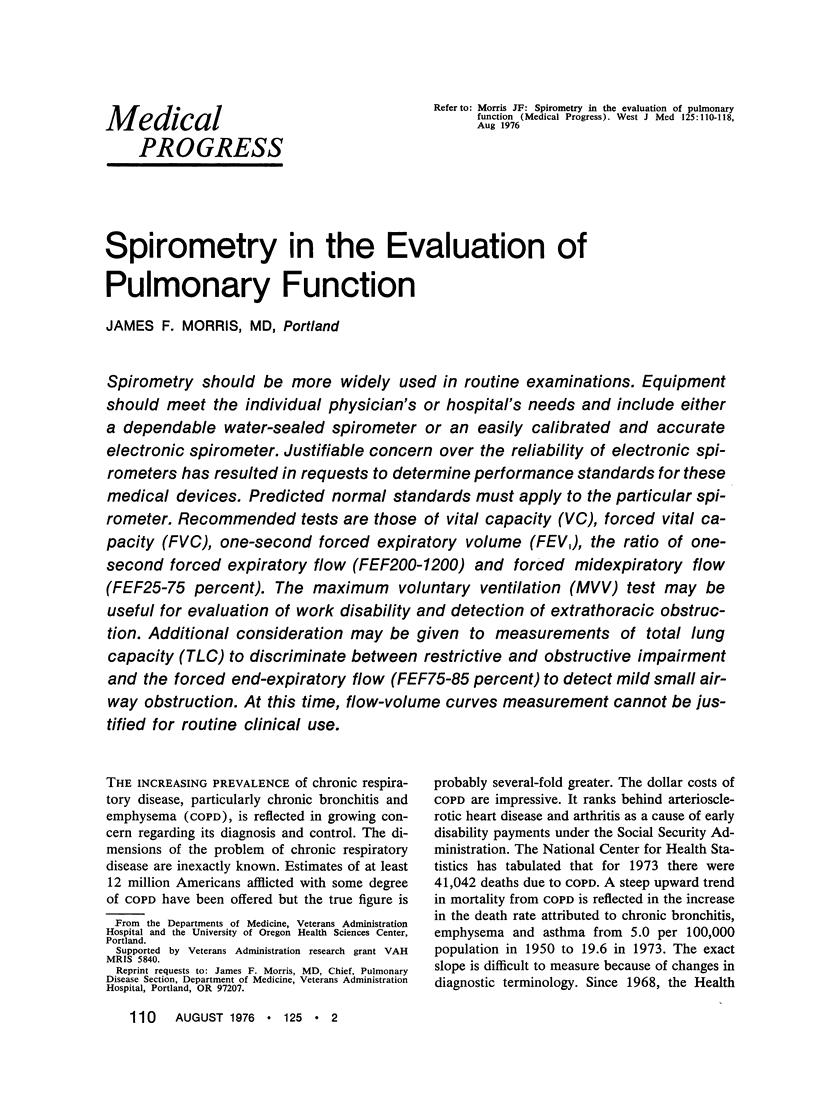
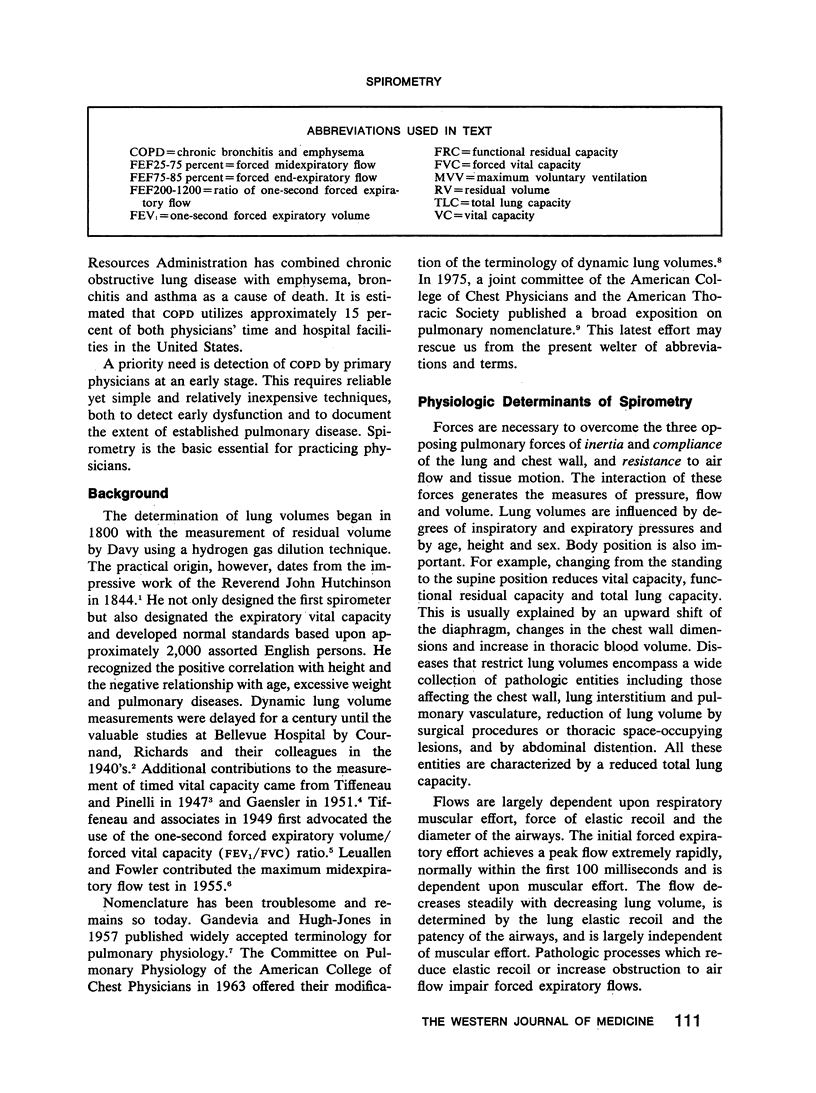
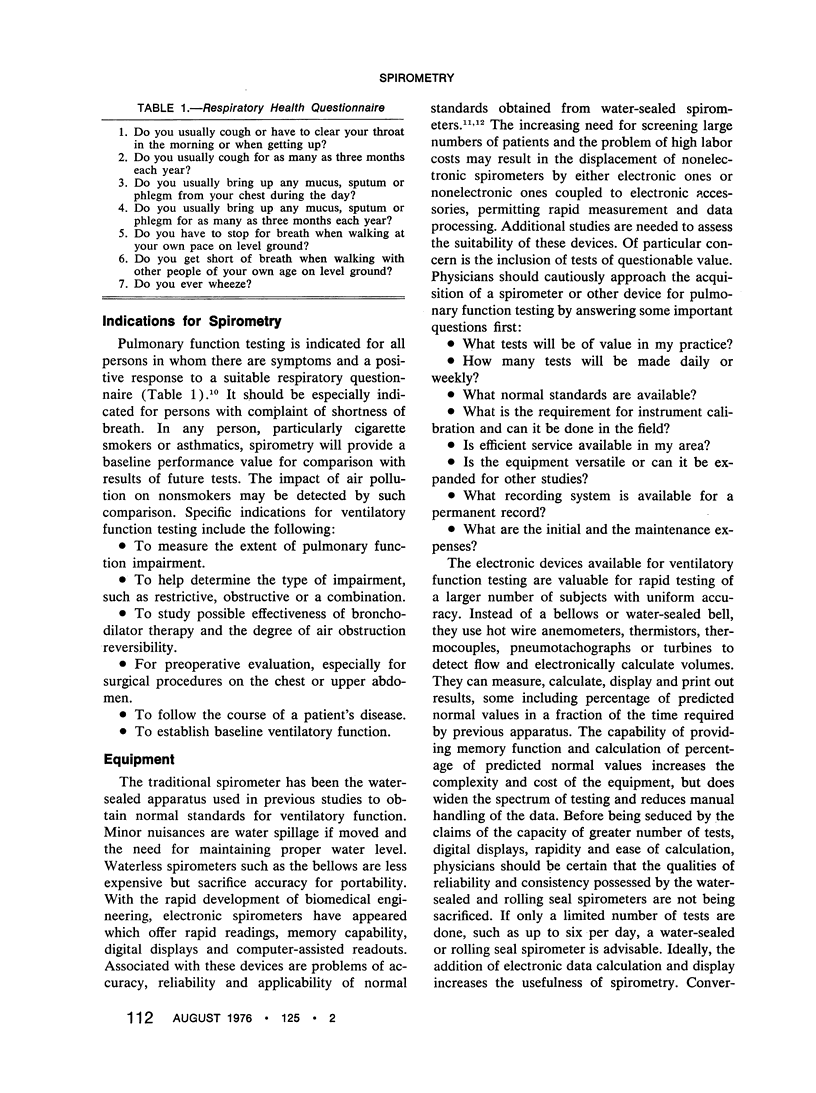

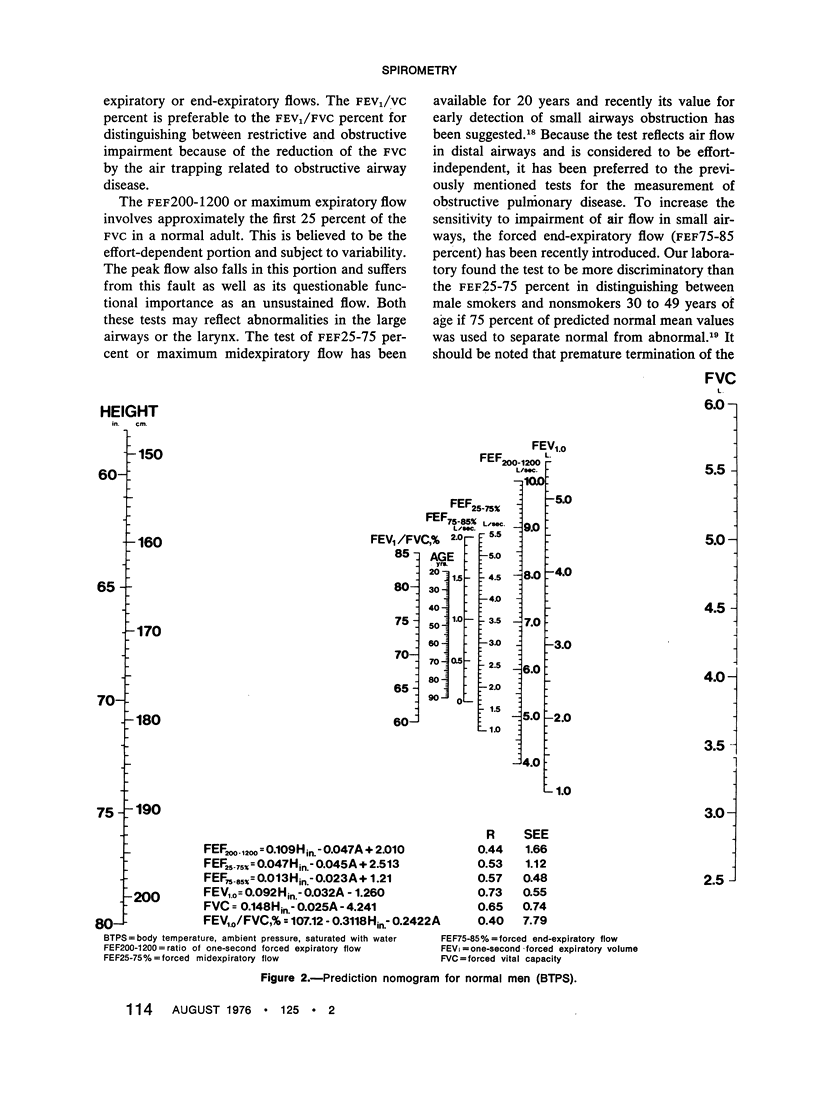
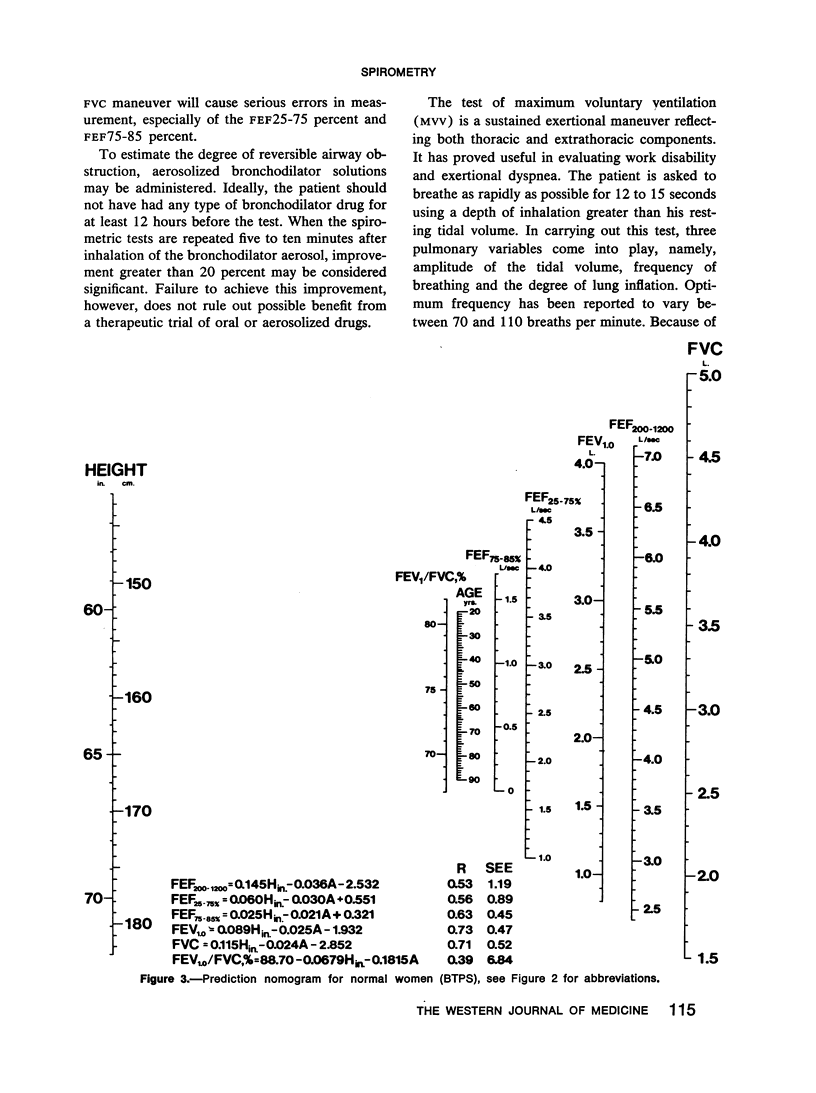
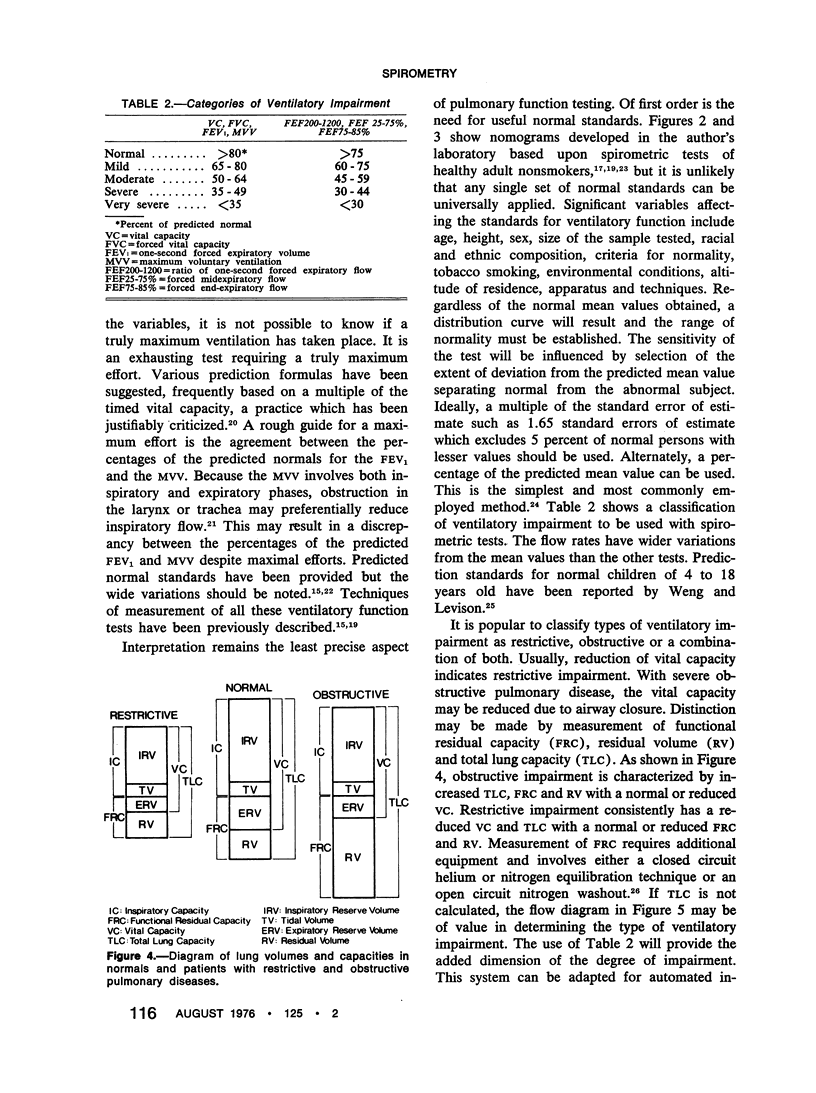
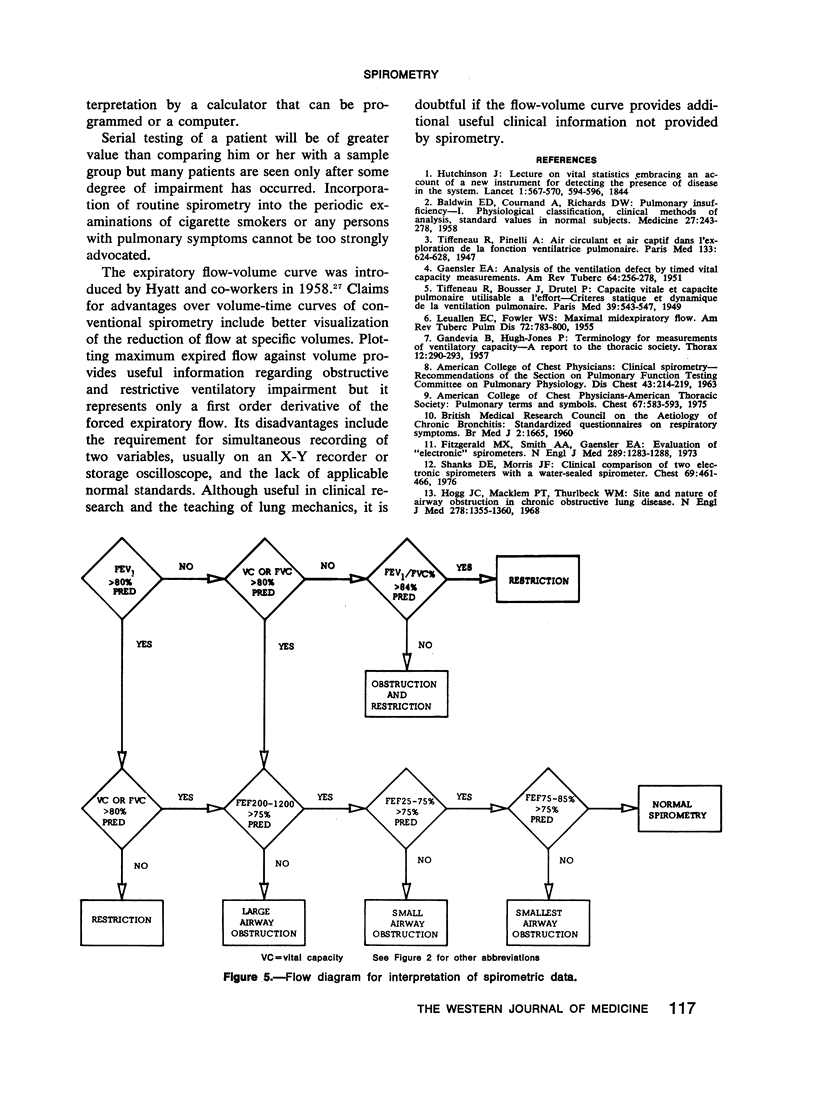

Selected References
These references are in PubMed. This may not be the complete list of references from this article.
- BERNSTEIN L., KAZANTZIS G. The relation between the fast vital capacity curves and the maximum breathing capacity. Thorax. 1954 Dec;9(4):326–339. doi: 10.1136/thx.9.4.326. [DOI] [PMC free article] [PubMed] [Google Scholar]
- FitzGerald M. X., Smith A. A., Gaensler E. A. Evaluation of "electronic" spirometers. N Engl J Med. 1973 Dec 13;289(24):1283–1288. doi: 10.1056/NEJM197312132892406. [DOI] [PubMed] [Google Scholar]
- GAENSLER E. A. Analysis of the ventilatory defect by timed capacity measurements. Am Rev Tuberc. 1951 Sep;64(3):256–278. doi: 10.1164/art.1951.64.3.256. [DOI] [PubMed] [Google Scholar]
- GANDEVIA B., HUGH-JONES P. Terminology for measurements of ventilatory capacity; a report to the thoracic society. Thorax. 1957 Dec;12(4):290–293. doi: 10.1136/thx.12.4.290. [DOI] [PMC free article] [PubMed] [Google Scholar]
- HYATT R. E., SCHILDER D. P., FRY D. L. Relationship between maximum expiratory flow and degree of lung inflation. J Appl Physiol. 1958 Nov;13(3):331–336. doi: 10.1152/jappl.1958.13.3.331. [DOI] [PubMed] [Google Scholar]
- Hogg J. C., Macklem P. T., Thurlbeck W. M. Site and nature of airway obstruction in chronic obstructive lung disease. N Engl J Med. 1968 Jun 20;278(25):1355–1360. doi: 10.1056/NEJM196806202782501. [DOI] [PubMed] [Google Scholar]
- Jones J. S., Renzetti A. D., Jr, Mitchell M. M. The maximal breathing capacity in extrathoracic airway obstruction. Am Rev Respir Dis. 1972 Dec;106(6):925–927. doi: 10.1164/arrd.1972.106.6.925. [DOI] [PubMed] [Google Scholar]
- KORY R. C., CALLAHAN R., BOREN H. G., SYNER J. C. The Veterans Administration-Army cooperative study of pulmonary function. I. Clinical spirometry in normal men. Am J Med. 1961 Feb;30:243–258. doi: 10.1016/0002-9343(61)90096-1. [DOI] [PubMed] [Google Scholar]
- LEUALLEN E. C., FOWLER W. S. Maximal midexpiratory flow. Am Rev Tuberc. 1955 Dec;72(6):783–800. doi: 10.1164/artpd.1955.72.6.783. [DOI] [PubMed] [Google Scholar]
- Lindall A., Medina A., Grismer J. T. A re-evaluation of normal pulmonary function measurements in the adult female. Am Rev Respir Dis. 1967 Jun;95(6):1061–1064. doi: 10.1164/arrd.1967.95.6.1061. [DOI] [PubMed] [Google Scholar]
- McFadden E. R., Jr, Linden D. A. A reduction in maximum mid-expiratory flow rate. A spirographic manifestation of small airway disease. Am J Med. 1972 Jun;52(6):725–737. doi: 10.1016/0002-9343(72)90078-2. [DOI] [PubMed] [Google Scholar]
- Morris J. F., Koski A., Breese J. D. Normal values and evaluation of forced end-expiratory flow. Am Rev Respir Dis. 1975 Jun;111(6):755–762. doi: 10.1164/arrd.1975.111.6.755. [DOI] [PubMed] [Google Scholar]
- Morris J. F., Koski A., Johnson L. C. Spirometric standards for healthy nonsmoking adults. Am Rev Respir Dis. 1971 Jan;103(1):57–67. doi: 10.1164/arrd.1971.103.1.57. [DOI] [PubMed] [Google Scholar]
- Morris J. F., Temple W. P., Koski A. Normal values for the ratio of one-second forced expiratory volume to forced vital capacity. Am Rev Respir Dis. 1973 Oct;108(4):1000–1003. doi: 10.1164/arrd.1973.108.4.1000. [DOI] [PubMed] [Google Scholar]
- Niewoehner D. E., Kleinerman J., Rice D. B. Pathologic changes in the peripheral airways of young cigarette smokers. N Engl J Med. 1974 Oct 10;291(15):755–758. doi: 10.1056/NEJM197410102911503. [DOI] [PubMed] [Google Scholar]
- Shanks D. E., Morris J. F. Clinical comparison of two electronic spirometers with a water-sealed spirometer. Chest. 1976 Apr;69(4):461–466. doi: 10.1378/chest.69.4.461. [DOI] [PubMed] [Google Scholar]
- Snider G. L. Spirometric evaluation of ventilatory function. JAMA. 1966 Sep 26;197(13):1095–1095. [PubMed] [Google Scholar]
- TIFFENEAU R., BOUSSER J., DRUTEL P. Capacité vitale et capacité pulmonaire utilisable à l'effort; critères statique et dynamique de laventilation pulmonaire. Paris Med. 1949 Dec 3;39(45):543–547. [PubMed] [Google Scholar]
- Weng T. R., Levison H. Standards of pulmonary function in children. Am Rev Respir Dis. 1969 Jun;99(6):879–894. doi: 10.1164/arrd.1969.99.6.879. [DOI] [PubMed] [Google Scholar]


